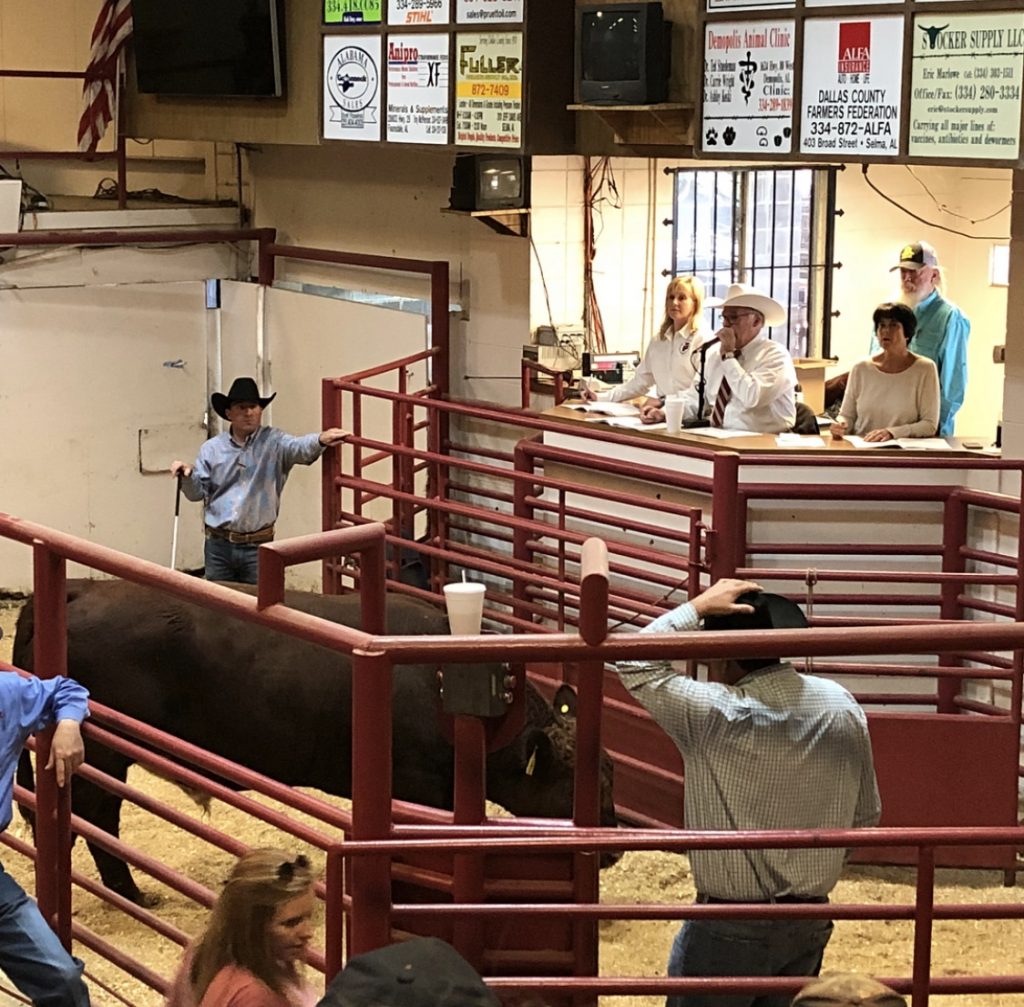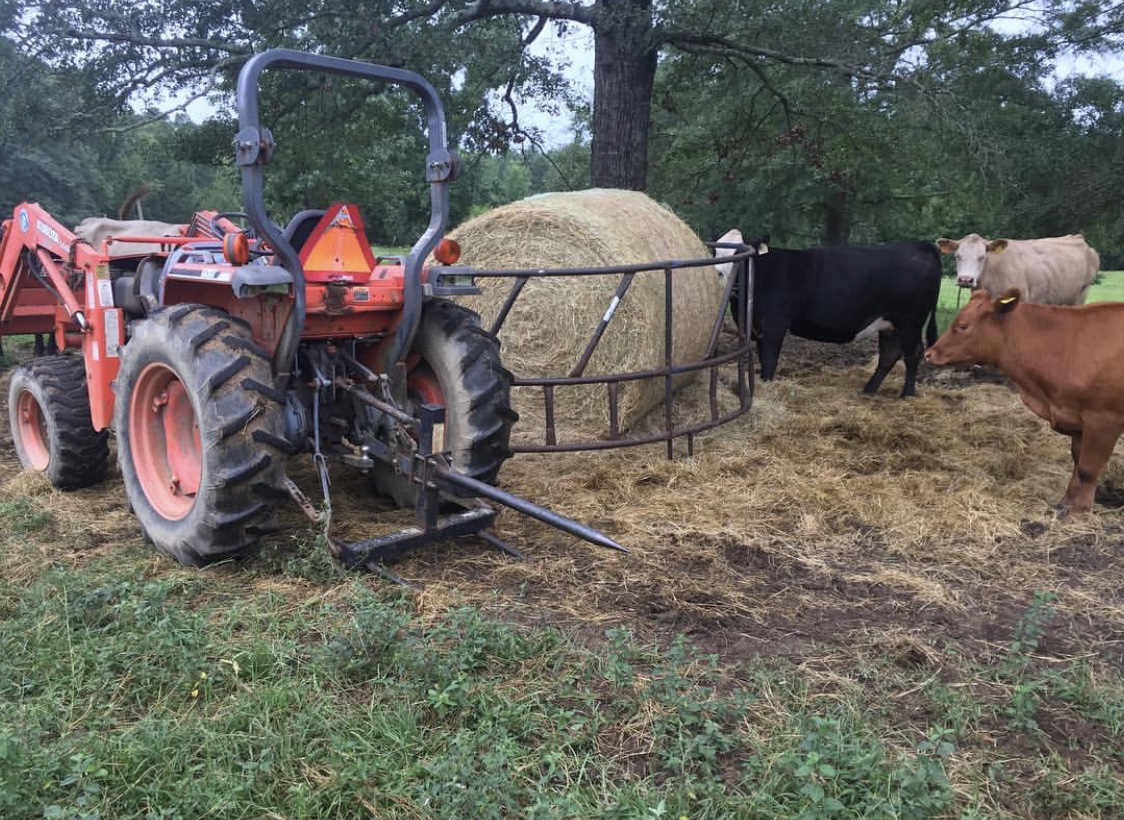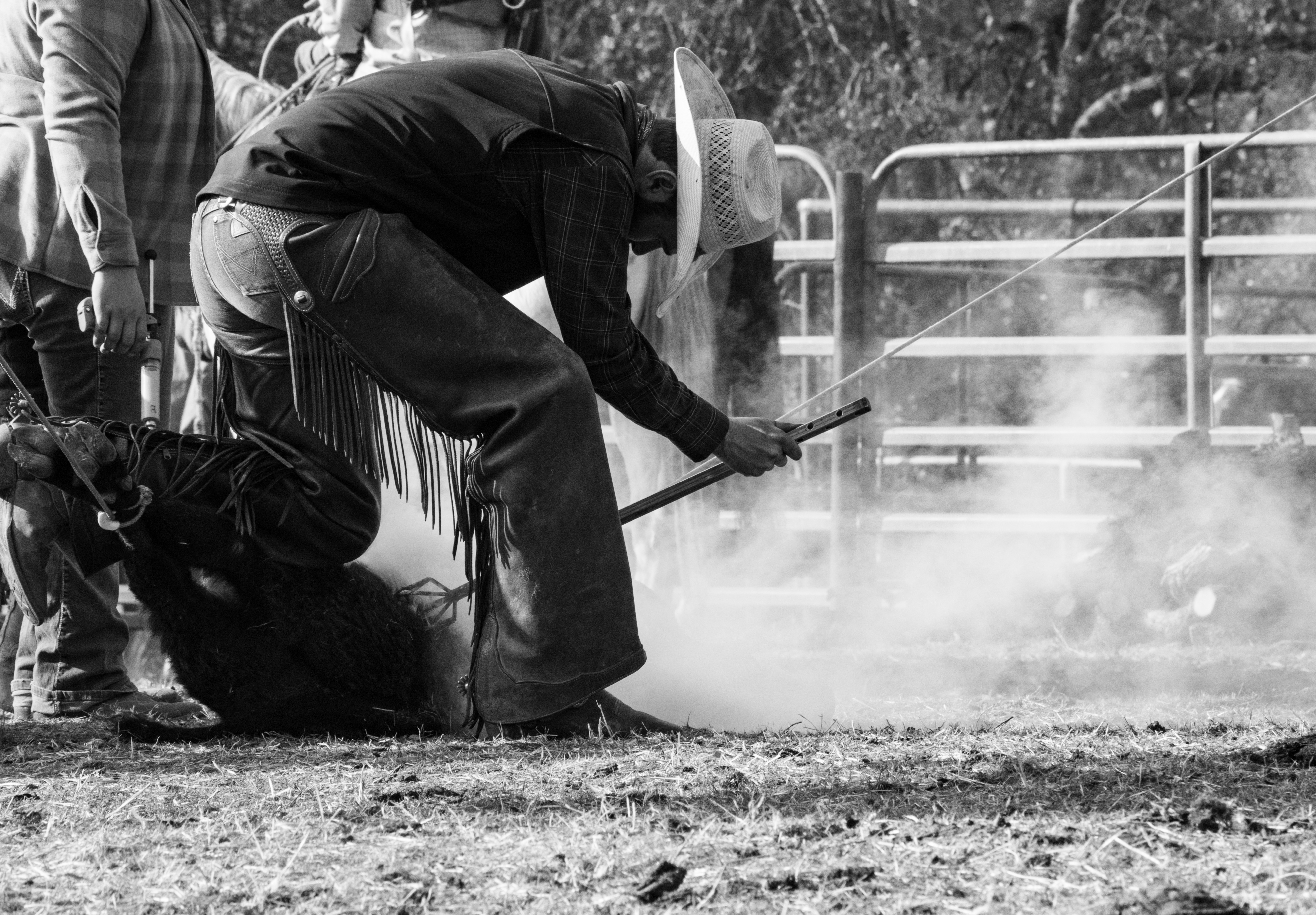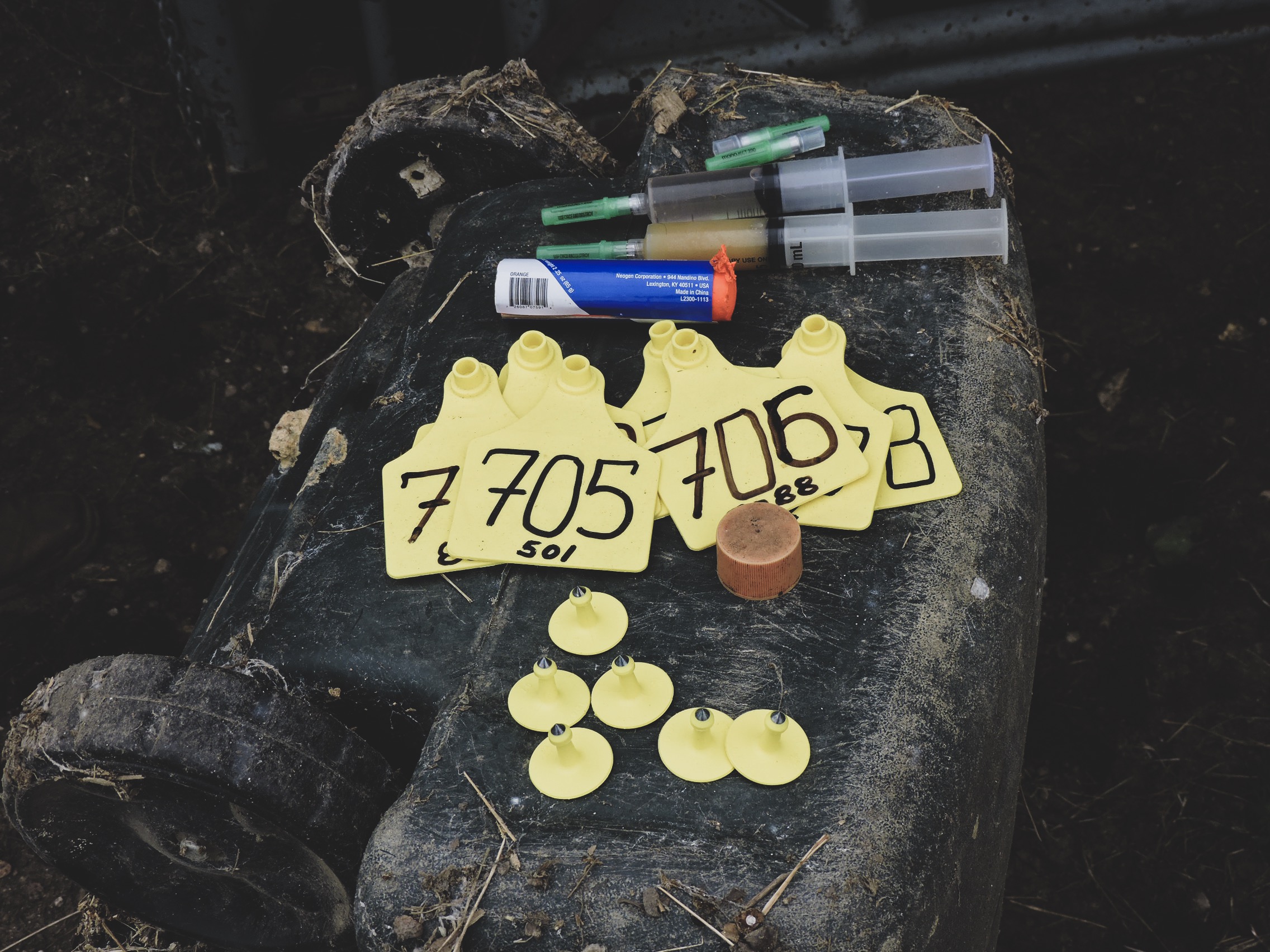
THE END OF THE BEGINNING
The final piece has come to the Beginner Rancher Series. At this point, we have discussed how to determine land needs, what type of operation you should have and the difference between the segments of the industry in the first series. The second article focused on how to get financial help, breed selection and the differences between cattle management practices( i.e., grass-fed, organic, etc.).
I still want to stress how many scenarios and factors cannot be covered in a short series like this so it’s best to be aware of your local resources and be thorough in your research. Find a mentor, speak to an extension agent, participate in educational courses or anything that can help you gain experience in different situations. As I have mentioned, a cattle operation is first and foremost a business and should be treated as such for any chance at profitability.
The following pages contain the final pieces of advice and knowledge I can give you in order to guide you in the right direction. Be sure to check out the past two Beginner Rancher pieces on myjobdependsonagmag.com.
RECORD KEEPING
When you have cattle it’s a great idea to keep track of their life. I compare this to a baby’s moments book that mom’s keep for their children; you’re tracking significant moments in their lives so you can reference them for future situations. A history of each animal, along with other information from the ranch, will allow you to make decisions in the future to help increase profitability. Having a reference to look at will help to cull animals you feel are underperforming, know how much you’re spending on feed, and what pastures are being used(and when), among many other variables.
If you are running a cow/calf herd, keep information on how easily they calved, keep track of breeding dates, dates when the cow or heifer calved and various other factors that are important to your operation. For most herds, keeping record of vaccinations, market weights, feed purchases, sire information are important data to keep track of.
There are multiple resources online that provide templates of record books to use on your operation. Of course, Excel is a great program in developing your own and hand-writing is just as useful if you prefer it that way. It might be hard to carry around a device with you around the cattle, if you’re wanting to enter in data immediately. It’s important to make time for your record keeping and not make it difficult on yourself. Set aside time to enter information into your book and find a method that works best for you.
Ultimately, the most important aspect of keeping records is knowing what you will do with the data you have collected. Collecting data means nothing if you don’t understand how you will use that information, so ensure that you are only entering data you know you can interpret and use as a tool in decision making later on.
WHERE TO BUY CATTLE
Livestock yards( stockyards, auction yards, sale barns, etc.) can be intimidating. Not understanding the auction process is stressful and confusing to some. While I love that buying at a stock yard is a great way to help local businesses, I empathize with you on your desire to buy cattle differently.
Before you buy your cattle, spend some time at an auction. I promise the people are friendly and there is typically really great food in their café’s. You don’t have to sign up as a bidder to watch and see how they run the cattle through, or look at a sales book. Depending upon the day you attend, they could have a bull sale, female sale or various other special sales designated to a specific category of cattle- so be sure you know what sales are going on and when. The sales barn might also have regular sales running in the middle of the week.
Exposure is the best way to get experience, and having another more knowledgeable individual with you is even better. All this talk about having a mentor isn’t a joke- there are many scenarios that might require you to bring along someone who knows how the process works and stockyards are no exception.

Thankfully, there are other ways to purchase cattle, albeit, they can be difficult and not as great as going to see the animal in person (which you should always do). Social media has changed the way we buy animals, but it has also put barriers on livestock sellers and buyers with the rise of animal rights activists. While Facebook is ridding its platform of For-Sale animal groups and posts containing any suggestive wording, there are still ways to find cattle online and through social media. You will have to look a little bit harder, but it’s not entirely impossible yet.
It’s best to stick with auctions. While it’s hard to sell an animal directly through social platforms, there are always advertisements regarding when a specific sale will take place and what kind of animals will be running through it. You can find this information on a sales yard’s website and attend the sales you prefer.
Be sure you know what you are willing to spend on cattle before you go to an auction yard. You can check the average sales price of cattle by looking at the United States Department of Agriculture livestock reports(online) so you know how much you might be spending on cattle.
EQUIPMENT NEEDED
Before you even buy your cattle, which is a recurring piece of advice in this article, you need to consider what equipment will be needed to manage your cattle. Some pieces, like tractors, might be expensive and purchasing brand new or right away aren’t the most financially sound business plans. Instead, look at used items, or save up and only purchase necessary items right away. Depending on what kind of operation you have, you will have different needs as far as equipment goes.
When it comes to tractors or any other heavy machinery- look at what you would need it for. A tractor to lift hay bales, or even hay rings, is an essential tool on most farms. However, there is upkeep and safety hazards that you must keep in mind when purchasing or operating these tools. Another major necessity is a trailer to haul cattle to various places. You might need to take a cow to a vet, if they can’t do a ranch call, or you’ll haul cattle to the sales yard; there are many reasons a livestock trailer is necessary.

Depending on your operation, you’ll need fencing, and with fencing comes checking and repairing. I couldn’t count how many times cattle have somehow managed to get through our fences and we would have to search along the fence line to find the hole and repair it. Our operation is relatively small, so consider how many acres you have- a quad or ranger are great ways to get around your ranch without needing to walk the entire fence to find that hole. Of course, horses are a great tool too, and if your ranch has rocky terrain or cattle in brush, horses and dogs are smart investments if you can handle them.
Shelter and pens are used to covering cattle and sorting them out of the herd for various purposes. Shelter should always be provided and protection from the elements should be considered. Pens can be easily made, but panels might be expensive. Also consider a chute in order to tag, vaccinate or doctor your cattle. This is a purchase that will make your operation much more efficient and therefore is a great investment. As always, buying used is an option, so long as all equipment is in good working order.
The purpose of equipment should be to provide your animals a safe, quiet atmosphere where they are not stressed or anxious and also a more efficient way to manage your farm. Consider looking into books and guidance by Dr. Temple Grandin for advice on great animal husbandry skills and how to set up your facilities so they benefit your cattle the best.
BRANDING AND TAGGING
There are different methods to identification of your cattle. Much like how some prefer to use horseback and dogs, while others prefer to use quads and man power to bring in cattle there are different ways to keep track of your cattle. When it comes to branding there are two methods: freeze branding and hot-iron branding.
Freeze branding is the method of cooling a branding iron with nitrogen or dry ice an alcohol, to alter the hair follicles, removing pigmentation and creating a light colored brand. On lighter cattle, freeze branding might be difficult because the brand shows up white on the animal, thus making it illegible. Another con to freeze branding is the availability of nitrogen, dry ice, alcohol or other supplies to apply the brand. This kind of brand, though, is easier to read and has a better eye-appeal on darker hided cattle.
Hot- iron branding is still widely used. This method is the opposite of freeze branding, where the iron is heated using gas heating, fire or even electricity. This method must be done correctly and well in order to prevent the brand from being ruined or causing pain to the animal. The animal must not move and the brand should be held on the cow for only a matter of seconds. There are many other factors to consider when branding, so be sure to do more research before selecting an option.

Tagging cattle can be done in partnership with branding, or it can be done alone. Keep in mind that cattle rustling( stealing cattle) is still very common and ear tags are easily removed whereas a brand is permanent. Ear tags are a great way to keep track of cattle and can help identify which calves belong to which mothers or if one has been vaccinated or not. A method I have seen is to number the tags based upon the month they are born and how much they weigh. Notches in the ear tags can show if they have been vaccinated and what vaccinations they have received. This is a method that you an customize to fit your needs and there aren’t any rules!

Regardless of which method you choose to use as identification tools, keep in mind that knowing how to apply a brand or tag is very crucial in ensuring the animals have the least amount of discomfort and the identification is easy to read.
FEED
When it comes to feeding cattle, regardless of what operation you have, you need to look into the cost. Many producers grow their own hay in order to feed cattle during winter months when grass isn’t as available. Your operation may not have cattle out on pasture, but grain and other feedstuffs are costly. Pay attention to the markets, like corn and soybean, to know what you might be paying on feed during that time period. Look into local by-products, like almond hulls and distillers grain, for ways to feed cattle, help prevent food waste and help local farmers!
Growing your own hay will require equipment that you may not be able to afford right away, like balers, and require you to find more land to grow it on. Depending on how many head you are running, this may not be the most cost-effective way. Testing your hay might be needed to ensure it has all the nutrients for cattle, so this is another cost and step in the process of growing hay.
Rotational grazing is an important part of sustaining a pasture and ensuring it continues to grow nutritious grass for livestock. There are methods to this and it varies greatly depending on your operation. Knowing that you will need to understand your soil and grass is important to creating a grazing plan for your herd. There has been a lot of research done on this particular subject, and your extension agent can help you come up with a plan.
Feeding is an ever-changing and challenging world. If you aren’t familiar with feed, it’s best to speak to a professional who understands the economic and nutritional impact feed will have on your operation.
VETERINARY RELATIONSHIPS
Health management is an important aspect on a farm. In California, we are required to have what is called a Veterinary Feed Directive for use of antibiotics in feed or water. A veterinary-client -patient relationship is a great idea for any operation because having a professional who is familiar with your cattle and your farm expedites processes where cattle need care and can improve your herds health. Understanding the signs of a healthy or sickly cow will also help you determine what must be done to make your animals healthy again. This is something a lot of people flock to social media to get advice on, but it’s best to take an animal science course or find a scholarly article to do more research on how a healthy cow behaves or looks versus an unhealthy animal. Being able to describe what is going on with your cattle will help the vet make a decision on how to care for them.
MARKETING YOUR CATTLE
Your cattle are your business and therefore must be marketed in order to be sold. Facebook and social media are great platforms, so long as you don’t get banned for posting sale ads, but your personal brand is also a way to market cattle. Being recognized in the industry is a way to build relationships and a reputation. These sorts of things will help you sell your cattle.
Going to a sales yard is a way to get your cattle out in front of buyers, but also butchering and selling your animals cuts to a local farmers market or grocery store are other ways to get your product out to consumers.
Private treaty, video auctions and Tele-auctions are just a few other ways to market cattle and no one way fits all producers. This is your business and knowing what your market is, when it’s best to sell and how to market is up to your decision. University of Georgia has some great materials on marketing cattle, so look into how others in your area are selling their cattle, determine your audience and market and as always, learn as you go.
SUMMARY
Cattle operations come in all shapes an sizes. With how the market is today, not everyone can or will be profitable. With some research and heavy planning, though, your operation can be as successful as you want it to be. Start slow, start small and don’t be afraid to make a few mistakes here and there. Know who your trusted mentors are, know when to quit, or when not to give up. Don’t compare yourself to every other established operation and be as involved in every aspect of the industry as you can. There are many resources out there to teach you what you need to know, but take it all with a grain of salt because what works for some, won’t work for others. Be willing to ask questions and do as much research as possible before jumping into this crazy thing we call the beef industry. Good luck!
To check out the rest of the series, please visit here:








